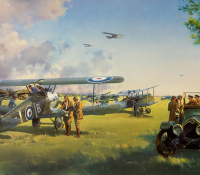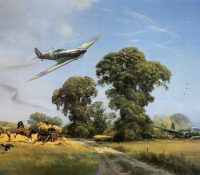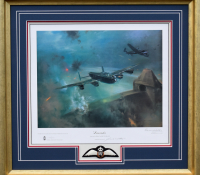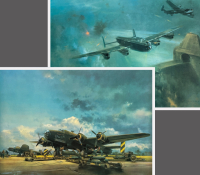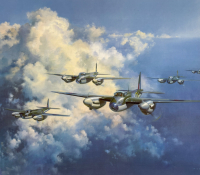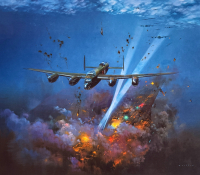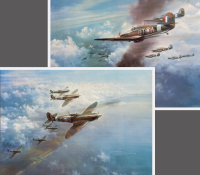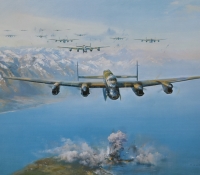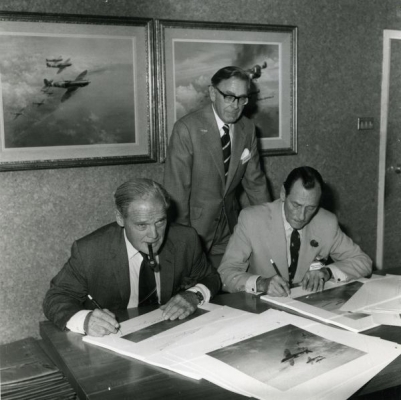
Frank Wootton
Frank Wootton has earned his place in history as one of the founding fathers of military and aviation fine art.
Born in Hampshire in 1914, Wootton’s early life was not easy. His father disapproved of his wanting to become an artist, urging him to get a ‘proper job’ in architecture or engineering like his brothers. However, Wootton persevered and was awarded a scholarship to Eastbourne’s School of Art aged 14, where his early career began to form itself. Wootton went on to produce a series of successful books in the 1930s, most notably in 1936 with the bestseller ‘How to Draw Aircraft’ – it was clear that a passion for aviation fine art was developing.
After the outbreak of WWII, Wootton was determined to sign up for the RAF in any aircrew role they could find for him. However, senior officers soon picked up on his talents as an artist, first asking him to record the aircrew and aircraft of the Canadian Air Force. During the War, Wootton became the RAF’s official artist, a role which took him all over the world and saw him produce artistic records of the Battle of Britain and the Allied Invasion of Europe.
Wootton had made a name for himself, and his career was only furthered post-War. He was a founding member of the Guild of Aviation Artists, and continued to work in official roles with the RAF for many years. His work is now some of the most collectable in the field, not least because many of the signatures on his limited edition prints are unique – for example, Wootton’s classic piece ‘Lancaster’ is the only print known to have been signed in the entire edition by Sir Barnes Wallis. To acquire Wootton’s work is to acquire a piece of history and heritage.

